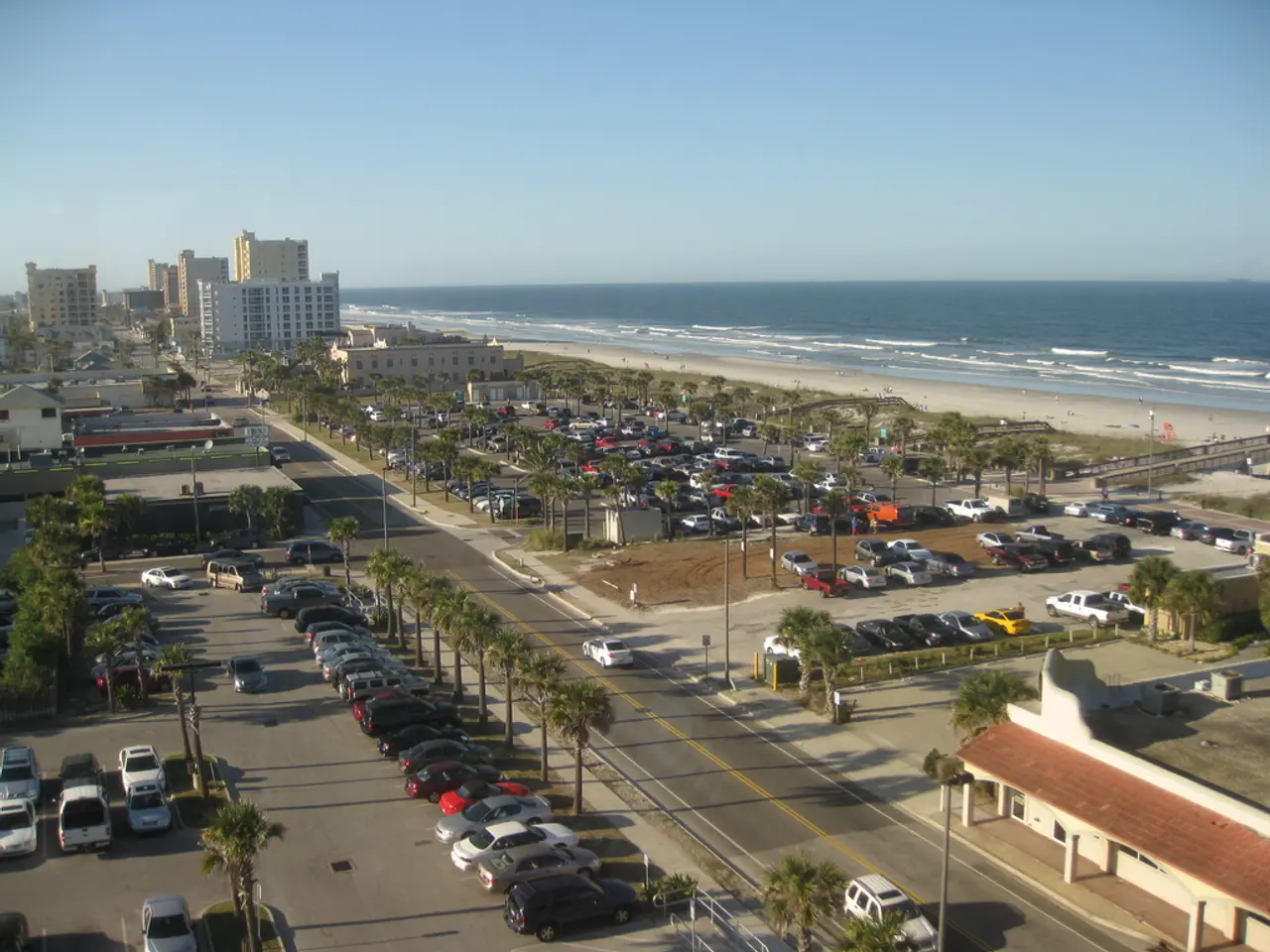Collaborating on Bathymetry Data Collection - Contribute Your Underwater Depth Information to Discover More about the Ocean's Depths and Share Your Findings
In the realm of ocean mapping, the International Hydrographic Organization's (IHO) Crowdsourced Bathymetry (CSB) initiative is making significant strides. As we approach mid-2025, milestones have been achieved, marking a substantial advancement in our understanding of the world's oceans.
The National Oceanic and Atmospheric Administration (NOAA) has taken the lead in processing the full body of crowdsourced bathymetric data, a major step forward in ocean mapping [2][4]. This initiative aligns with broader efforts like Seabed 2030, which now boasts over 185 contributors from various countries, indicative of growing global engagement [1].
The CSB initiative benefits from new platforms such as the CSB Data Explorer, a web-based tool developed in collaboration with FarSounder, the International SeaKeepers Society, the IHO, and Seabed 2030. This tool allows contributors to visualize their data contributions and see where their mapping efforts impact the overall project [3].
Despite these advancements, approximately 72.7% of the ocean floor remains unmapped to modern standards, particularly in challenging deep-sea and polar areas [1].
The IHO defines CSB as the collection of depth measurements from vessels, using standard navigation instruments, while engaged in routine maritime operations. The world's commercial fleet, equipped with certified systems consisting of at least a single beam echo-sounders and satellite-based navigation systems, represents a significant untapped source of potential depth measurements [5].
To date, it is encouraging to see that 30 coastal states have replied positively to requests for support for the provision of CSB bathymetry data gathered by ships within waters under national jurisdiction [6]. However, it is important to note that bathymetric measurements for the knowledge or exploitation of the marine environment in waters of national jurisdiction are regulated by national laws in accordance with the United Nations Convention on the Law of the Sea (UNCLOS) [7][12]. The national Hydrographic Office (HO) is the only authorized organization to collect and store bathymetric data with the aim of chart production and bathymetry modelling within the national waters of jurisdiction [5][11].
The IHO and the CSBWG believe that the lack of initial responses to requests for support for the CSB initiative and data gathering activities indicated that the circular letters were not clear and complete [3]. In response, the CSBWG was established to draft a guidance document meant to empower mariners to collect and contribute CSB data [8].
The IHO encourages all member states to consider responding positively to IHO CL 21/2020 and IRCC CL 1/2020, harnessing their own fleets (e.g., Coast Guard, academic, Navy) using CSB data collection techniques by default, and for the member states not yet members of the CSBWG to join the group [15].
Engaging in CSB does not only mean to provide data or to have access to seabed information but to contribute to spreading the message of global responsibility in order to reveal the deep and fill the existing gaps in mapping the ocean [18]. The success of a global initiative is always dependent on the level of leadership, commitment, and activities of the member states [14].
For those who are not members of the CSBWG, it is encouraged to commit to this important initiative and be part of the leadership to enable and to engage in: "Citizen Sourced Data - Help Reveal the Deep and Share Your Data!" [20]
References: 1. https://www.seabed2030.org/ 2. https://www.noaa.gov/news-release/noaa-processes-full-body-of-crowdsourced-bathymetric-data 3. https://www.seakeepers.org/news/csb-data-explorer-launched 4. https://www.farsounder.com/csb-data-explorer/ 5. https://www.iho.int/CSB/Pages/default.aspx 6. https://www.iho.int/News/Pages/iho-crowdsourced-bathymetry-progresses-well.aspx 7. https://www.un.org/depts/los/convention_agreements/texts/unclos/unclos_e.pdf 8. https://www.iho.int/CSBWG/Pages/default.aspx 9. https://www.iho.int/CSB/Pages/CSB_Data_Collection_Guidance.aspx 10. https://www.iho.int/CSB/Pages/CSB_Data_Collection_Guidance.aspx 11. https://www.iho.int/CSB/Pages/CSB_Data_Collection_Guidance.aspx 12. https://www.iho.int/CSB/Pages/CSB_Data_Collection_Guidance.aspx 13. https://www.iho.int/CSB/Pages/CSB_Data_Collection_Guidance.aspx 14. https://www.iho.int/CSB/Pages/CSB_Data_Collection_Guidance.aspx 15. https://www.iho.int/News/Pages/iho-invites-member-states-to-join-the-crowdsourced-bathymetry-initiative.aspx 16. https://www.iho.int/CSB/Pages/CSB_Data_Collection_Guidance.aspx 17. https://www.iho.int/CSB/Pages/CSB_Data_Collection_Guidance.aspx 18. https://www.iho.int/CSB/Pages/CSB_Data_Collection_Guidance.aspx 19. https://www.iho.int/CSB/Pages/CSB_Data_Collection_Guidance.aspx 20. https://www.iho.int/CSBWG/Pages/default.aspx
- In terms of coastal zone management and environmental science, harnessing the power of marine spatial data from gadgets like satellites and standard navigation instruments is crucial for the IHO's hydrographic survey, especially in processing the crowdsourced bathymetric data by the National Oceanic and Atmospheric Administration (NOAA).
- The upcoming era of data-and-cloud-computing technology can play a significant role in climate-change research, as it facilitates the storage and analysis of extensive hydrographic survey data, thereby helping scientists better understand the impact of climate change on the marine environment.
- The rapid advancements in hydrographic survey techniques and coastal zone management have highlighted the importance of collaborative efforts among organizations, such as the IHO and the International SeaKeepers Society, to create tools like the CSB Data Explorer, which encourages citizen participation in the collection and visualization of bathymetric data for the betterment of global environmental-science.
- As the CSB initiative continues to progress, the integration of science, technology, and global cooperation will be essential to bridging the data gaps that exist within challenging deep-sea and polar areas, ultimately ensuring that we can address the environmental and societal challenges of our era effectively.




